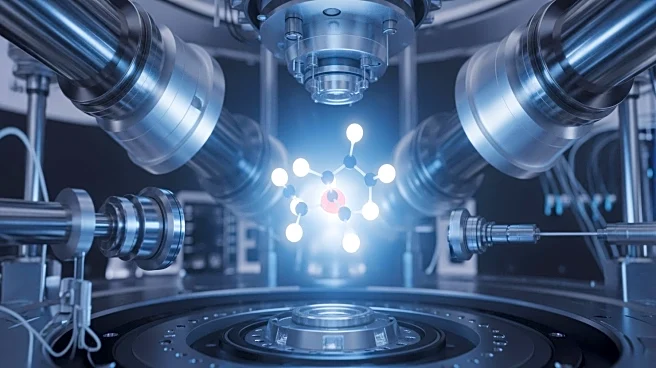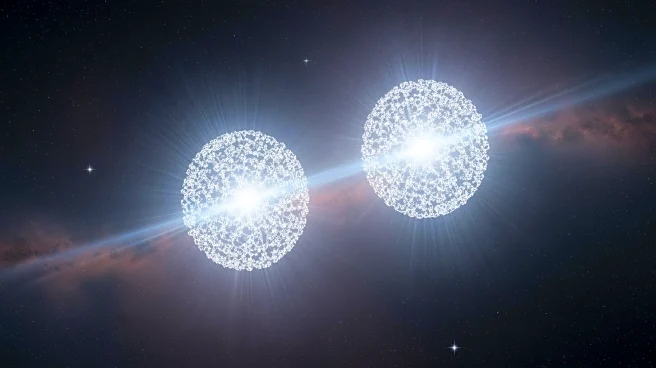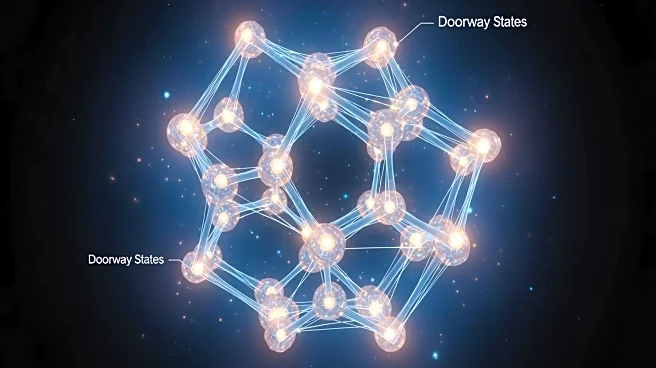What's Happening?
Researchers have developed a novel method to study the inner workings of atomic nuclei using a single molecule as a tiny particle collider. By pairing a radium atom with a fluoride atom, they created a molecule of radium monofluoride,
allowing electrons to infiltrate the radium nucleus and interact with its contents. This approach provides a new way to measure the magnetic distribution of a nucleus and could help solve key mysteries in physics, such as the imbalance between matter and antimatter in the universe. The study represents an early step in using this technique to shed light on the radium nucleus and its potential to amplify symmetry violations.
Why It's Important?
The development of a microscopic collider using a single molecule offers a simpler and more accessible alternative to traditional large-scale particle colliders. This method could revolutionize the study of atomic nuclei and provide insights into fundamental symmetry violations that may explain the scarcity of antimatter in the universe. The findings have implications for our understanding of the universe's composition and the forces that govern atomic interactions. The study highlights the potential for innovative approaches to advance scientific knowledge and address longstanding questions in physics.
What's Next?
Researchers plan to use this technique to further investigate the radium nucleus and explore its role in symmetry violations. Future studies may focus on refining the method and expanding its application to other atomic nuclei. The development of sensitive techniques to measure interactions within the nucleus will be crucial for advancing this research. The study opens new avenues for exploring the fundamental properties of matter and antimatter and their implications for the universe's structure.
Beyond the Headlines
The research raises questions about the nature of atomic interactions and the potential for new discoveries to challenge existing theories. It underscores the importance of innovation and the role of interdisciplinary collaboration in advancing scientific knowledge. The findings also highlight the interconnectedness of atomic phenomena and the potential for new approaches to reshape our understanding of the universe's composition.











